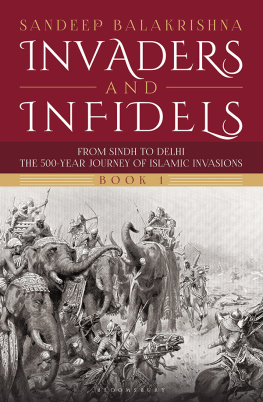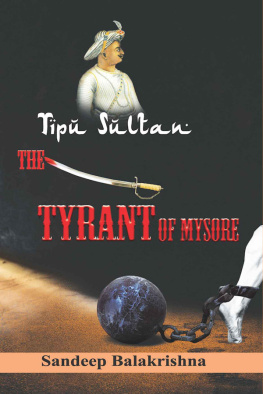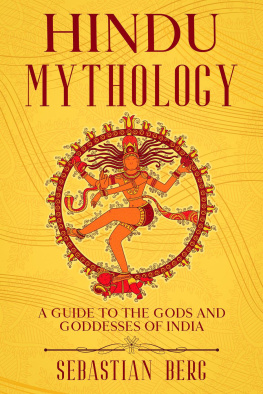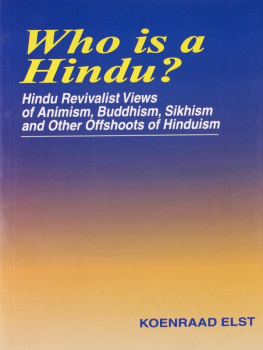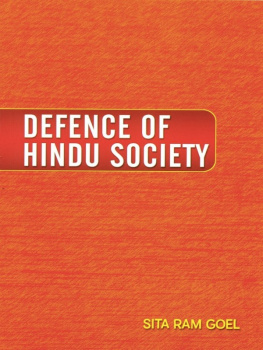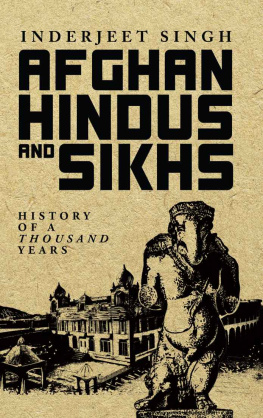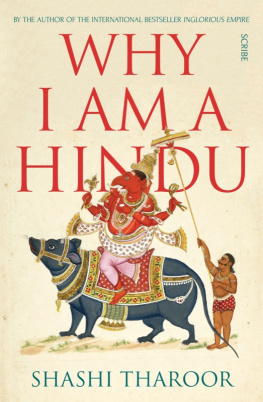Sandeep Balakrishna
10 Lessons from Hindu History in 10 Episodes
Tales of Grit, Heroism and Valour
Copyright 2020 by Sandeep Balakrishna
All rights reserved. No part of this publication may be reproduced, stored or transmitted in any form or by any means, electronic, mechanical, photocopying, recording, scanning, or otherwise without written permission from the publisher. It is illegal to copy this book, post it to a website, or distribute it by any other means without permission.
Sandeep Balakrishna asserts the moral right to be identified as the author of this work.
Sandeep Balakrishna has no responsibility for the persistence or accuracy of URLs for external or third-party Internet Websites referred to in this publication and does not guarantee that any content on such Websites is, or will remain, accurate or appropriate.
Designations used by companies to distinguish their products are often claimed as trademarks. All brand names and product names used in this book and on its cover are trade names, service marks, trademarks and registered trademarks of their respective owners. The publishers and the book are not associated with any product or vendor mentioned in this book. None of the companies referenced within the book have endorsed the book.
First edition
This book was professionally typeset on Reedsy
Find out more at reedsy.com
Dedicated to the nameless warriors who throughout the ages fought for their ancient Dharma till the end.
It is because the blood they shed and the sacrifices they endured that India still retains her original name: Bharatavarsha
Contents
Preface
This work is a collection of ten episodes and stories from the nearly inexhaustible mine called the history of India. They were first published in The Dharma Dispatch as magazine-style essays. Owing to the generous and substantial feedback and suggestions by well-wishers and readers alike, they have been compiled into the book you are now reading. These essays have been significantly expanded with additional information with references and notes at the end of each chapter.
The criteria for selecting only these ten episodes are rather straightforward. The first is the variety of the historical topics covered in these episodes, which becomes evident as you read. The second is to uncover and offer relatively obscure events not generally covered both in popular and public narratives about Indian history. The third is the insights and valuable lessons they offer Hindus as a civilisational people and India as a civilisational state.
Perhaps no other people have fought as hard and for so long and endured centuries of humiliation and tyranny under alien despotisms and finally emerged victorious as the Hindus. This among others is a fundamental reason why a thorough and truthful study and retelling of this history is needed. The study of Hindu history is also a study of values and inspiration and a profound spiritual yearning that subconsciously continues to guide Hindus. It is also what makes India a unique and distinctive country which is not primarily defined by its politics but by its philosophy and spirituality. The essays in this work both tangentially and explicitly bring out these aspects.
Like my other books, 10 Lessons from Hindu History in 10 Episodes is envisaged as a popular narrative without overlooking or taking liberties with historical accuracy. I hope you will find this book useful and informative and that it will kindle your interest in Indian history, which like the Indian Ocean at Kanyakumari, is vast, infinite and abundant with invaluable treasures.
Needless, any errors in the book are mine alone and I stand corrected in advance.
SANDEEP BALAKRISHNA
01 September 2020
1
The Verse that Heralded a Half Century of the Splendid Reign of Paramara Bhoja Raja
An inspiring and moving historical narrative about the 11th Century king, the immortal Paramara Bhoja
* * *
The Dawn of Civilisational Darkness
B y the close of the tenth century, even as Shakti Kavi (Brawny Poet) Ranna was writing supercharged verses of brilliant Kannada poetry extolling his patron, the Western Chalukya King Tailapa II, classical Bharatavarsha was perched on the edge of implosion into irretrievable civilizational pieces. In the faraway impregnable alcazar at Ghazni, Mahmud had decided to cast his predatory eyes on mainland India. Blissfully unaware, Tailapaa II had at last, successfully vanquished the great Paramara King of Malwa, Munja (or Vakpati Munja) sometime in 994-95 CE. History is unclear on whether Munja died in battle or was executed by Tailapa II.
Indeed, this entire century was a fiery cauldron of extraordinary but heedless heroism, which witnessed the spectacular, self-inflicted death of three major Hindu dynasties. vinakle vipartabuddhi. The flame burns the fiercest before turning into carbon. It was a century of vision-impaired Kshatra whose civilisational consequences Hindus are still suffering.
Yet, this all-round implosion didnt occur only with the deaths of Munja or Tailapa II who savoured his great victory for barely two years.
Last Beacon of an Ancient Noble Tradition
Munja was succeeded in 1000 CE by his fabulously renowned nephew, the indomitable warrior, encyclopaedic scholar, and immortal poet Paramara Bhoja Raja. Perhaps Bhoja is comparable only to or rivals his illustrious Gupta predecessor, Chandragupta Vikramaditya, and much later, to Sri Krishnadevaraya. Among their multifaceted accomplishments, they upheld the fine and timeless Sanatana tradition that scholarship and learning presides over royalty.
The selfsame Mahmud of Ghazni, the Islamic barbarian, unscrupulous plunderer and prolific destroyer of Hindu temples had to cravenly sneak back to Ghazni owing to the sheer terror he felt at the mere news that Paramara Bhoja had decided to punish his fanatical misadventure at Somanatha. And as long as Bhoja was alive, Mahmud didnt attempt a similar escapade in the region. But in the long run, it appears that Mahmuds fanaticism took deeper and more enduring roots.
Bhojas Vagdevi Languishes Amid Sufi Dargahs
Paramara Bhojas beloved capital, Dhrnagara (todays Dhar city in Madhya Pradesh), which once housed a grand Saraswati Temple is now bereft of Her. The mlamurti of the temple was befittingly named Vgdev, the Goddess of Speech, Articulation and Learning. This Vgdev continues to languish as an artifact in the British Museum. The enormous Saraswati Temple complex also served as a mini-university until it was spotted by a pious Sufi fakir named Kamal Maulana, who stayed in Malwa for three decades, collected intelligence and faithfully transmitted it to the super-bigot Ala-ud-din Khalji. What happened to it after that is a gory story unnecessary to narrate here. Today, whatever remains of the Vgdev Temple is surrounded by four dargahs of Sufi saints, and Hindus are allowed to offer Puja only once a year, on Basant Panchami.
The modern-day version of Ala-ud-din Khalji named Digvijay Singh had completely banned Hindus as long as he was the Chief Minister of Madhya Pradesh. This is the selfsame Bhojshala, today, more or less firmly in Muslim hands.
The Stirrings of an Intrigue
However, Bharatavarsha wouldve permanently lost Bhoja Raja when he was still a mere boy. Thanks to the selfsame Munja, his own uncle.
Bhojas ascension to the throne of Dhr, a historic event, was separated from his own death by a hairs breadth.
This essay narrates that story.
Munja was not an evil king by any standard as we shall see. He became a regent of the Malwa kingdom after the death of his brother, Sindhula or Sindhuraja, father of Paramara Bhoja. Soon, he assumed the full powers of a monarch even as the young lad Bhoja was piling up laurels at school for his sharp intelligence, felicity for learning, and the enormous promise he was showing as the future monarch.


